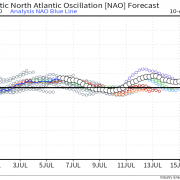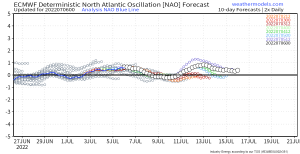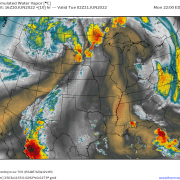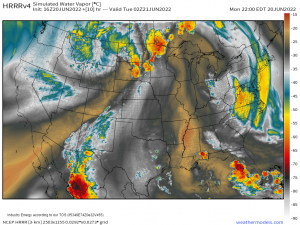
What Is The Dew Point?
While it is a term frequently used when discussing the weather, it is a hard concept to understand. Simply put, the dew point is the temperature at which the water vapor in the air naturally condenses into liquid water. When the temperature and the dew point are the same, dew forms on surfaces such as grass, trees, and cars. When the temperature and the dew point are the same, and both at or below 32 degrees, frost forms as the moisture in the air condenses and then simultaneously freezes. While these are both cool and important phenomena, the usefulness of the dew point extend far beyond frost and dew.
The dew point is a useful way to approximate humidity, especially in the summer months as the value of the dew point indicates how much moisture is in the air. If there’s an abundance of moisture in the air, the atmosphere won’t have to cool off as much for that moisture to begin condensing. It’s the temperature at which this condensation occurs that is the value you see as the “dew point”. The fact that the dew point is directly related to how much moisture is in the air is why the dew point is useful in measuring humidity. Generally speaking, dew points above 60 are considered humid and anything approaching 70 is oppressive. Dew points in the 50’s will feel plenty comfortable for most in the southern half of the US while it’ll take dew points in the 40’s for New Englanders to consider an airmass “dry”.
Because dew points serve as a measure of moisture in the air and moisture is a key ingredient for thunderstorm development, dew points can also serve as a useful indicator for where and when to expect thunderstorm development. While there are many other factors that go into determining if thunderstorms form or not, you generally need dew points near or above 60 to support widespread severe weather. This is not a hard and fast rule, however. Just this spring, a weak tornado touched down in rural Kansas with a dew point near 40!
Dew points are also important in forecasting temperatures on a day to day basis. The temperature will never drop below the dew point and the dew point isn’t subject to the dramatic diurnal swings that the temperature undergoes. On a clear and calm night, the low temperature will be roughly equivalent to the dew point when the sun goes down. In the daytime, a moisture laden airmass won’t heat up nearly as fast as a bone dry one because of two reasons. First, water has a higher specific heat capacity than air meaning that it takes more energy to warm up a given amount of water than an equivalent amount of air. Also, in a moist airmass, clouds will form more easily once heating begins. Clouds reflect some of the sun’s energy back out into space where it can’t heat up the earth’s surface quite as easily. Because of these two factors, a high dew point indicates a lower ceiling in terms of what the high temperature for a day could be.
Dew points are useful in winter forecasting as well. When a storm approaches, snow begins to fall from the mid levels of the atmosphere. Usually, a dry airmass is in place prior to the storm and thus the low levels are fairly dry. When the snow falls into this dry layer, the solid snow crystals evaporate into gaseous water vapor. The change from a solid to a gas requires energy from the surrounding environment as it is an endothermic process. The loss of energy from the environment (the air) means that it cools. This process is known as evaporational cooling and the magnitude of its effects is determined by how dry the low levels are. This, of course, can be measured using the dew point! Low dew points and large temperature dew point depressions (the difference between the temperature and the dew point) indicate the potential for a dramatic drop in temperature once precipitation begins falling.
These are a few of the most important ways that you can use the dew point to better understand the weather you’re seeing at a given time.
Feel free to send me an email if you have any questions about the weather you’d like me to explain! jack@weather.us
-Jack Sillin














Extremely helpful, thank you! I’ve wondered about this for years but had never googled it (or Siri as the case may be). I’ll keep this article for reference as one read through does not an expert make but I’m way ahead in my understanding of this complicated phenom after reading this article.